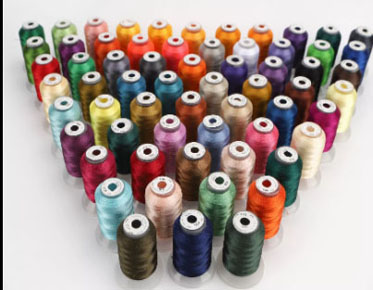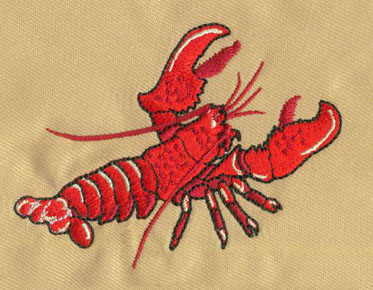Different Types of Embroidery Thread (And What They Are Used For)
In order to
get the best craft experience, it’s helpful to know the different types of
embroidery thread for digitizing embroidery. There are seven different types of embroidery thread, each very
similar but designed for a specific purpose or to achieve a certain look.
Stranded cotton tends to be the most common and is often considered the
"standard" in the craft. Matte thread is similar, but usually has one
less strand and less thread. The Perle variety has a high sheen, usually cannot
be separated into individual threads, and is sold by weight in most cases;
Quilters love using it for finer details within their projects due to its
strength.
Krell is a
type of wool yarn and is stronger than other types of yarn. Krell is popular
because it is durable, which means that the fabric made from it won’t tear
easily. Krell yarn is most often used for needlepoint, tapestry weaving and
embroidered wares. Persian thread is also made from wool but has a very fine
texture with a light lace effect on finished projects. This thread may be more
suitable for making small designs like mini-quilts and baby blankets because of
its delicate appearance. As far as needles go, tapestry needles are usually
size 14 or more in length and are thicker than regular embroidery quilting
needles due to the materials being worked with.
General
process
Embroidery
thread.
Embroidery
is a traditional sewing craft that involves decorative stitching with colored
threads on fabric. It's an art form that requires different types of thread,
depending on several factors, including what type of fabric is being used, the
stitching or embroidery technique being performed, and what kind of needle is
needed. While embroidery and other needlework has traditionally been done by
hand, in recent years sewing machines have been developed that can use software
programs to design and execute precise stitches to complete intricate
embroidery patterns.
Almost any
material can be embroidered when used with the correct type of thread and other
supplies. One of the most popular mediums for picture embroidery is 14-thread
Aida cloth, an open weave fabric. Plain or patterned materials are also good
options, and experienced craftsmen can add embroidered designs to almost
anything. Apparel and accessories are common applications, but even paper and
veneer can be great mediums, depending on the desired result.
Standard
Embroidery thread
Many craft
supply stores and fabric retailers sell a product simply called
"embroidery thread," which is usually one of two things: twisted
cotton or matte thread. Stranded cotton is usually made from six strands
twisted together. It is usually slightly glossy. This type is usually made of
cotton but can also be made of silk or rayon blends. It is most commonly used
in cross stitch crafts and is easily separated into individual strands.
Matte
embroidery thread is similar, but made of only five tightly twisted strands
instead of six. It gets its name because it is matte rather than glossy or
glossy. This variety is also sometimes called embroidered cotton.
Peer breed
Perle
cotton, sometimes called pearl cotton, is a thread made from undivided threads.
It usually has a high gloss and is very dense. Its thickness is often one of
its most distinctive features. Unlike other types of floss that are sold by
color or thread count, perle threads often come in different numbered weights.
The heaviest of these is 3, while 16 is the lightest and best. Other standard
weights include 5, 8 and 12.
Persian and
Krull Yarns
Persian
yarn can be made from wool or synthetic. It consists of three loosely stranded
strands and is most commonly used at the tip of a needle.
Crewel yarn
is similar in look and feel, but is two-ply instead of three-ply. It is heavier
than other embroidery flosses because it is made from natural or synthetic wool
and is often used for tapestry work or sewing on heavy fabrics.
Tapestry
specific options
Wool is
sometimes used to make embroidery thread.
People who
do a lot of tapestry work often look for threads that are specifically designed
for heavy-duty materials; most of these are made from durable materials that
look sharp and dramatic on heavy-duty materials, but also retain their color
through years of use and wear and quality. Most thread in this category is
called tapestry yarn or tapestry wool. They are usually twisted very tightly
and usually consist of four strands.
Another
type or tapestry thread, called Medici, was also made of wool. This is a finer,
lighter type than other wool embroidery thread. For this reason, it's usually
easier to work with when it comes to smaller, more complex designs.
Embroidery
Machine Options
Machine
embroidery thread is usually synthetic, most commonly polyester or rayon. Metal
wire is also available in many places. Both hand and machine varieties come in
a wide variety of colors. Dye lots are often numbered so artisans can match
colors exactly.



